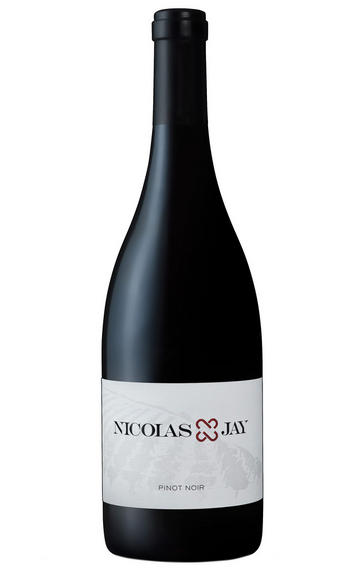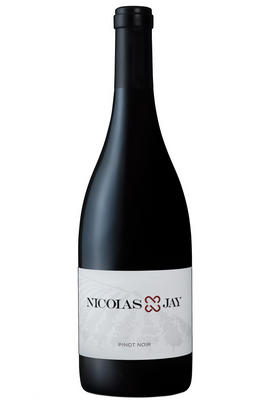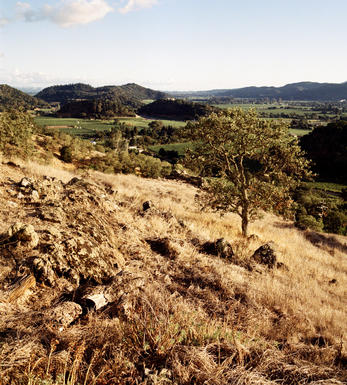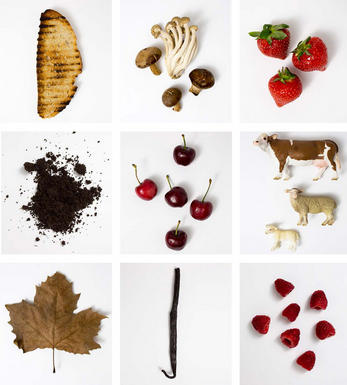
2018 Nicolas-Jay, Own-Rooted, Pinot Noir, Willamette Valley, Oregon, USA

About this WINE

Domaine Nicolas-Jay
Domaine Nicolas-Jay is a winery in Willamette Valley, Oregon. It is a collaboration between Jean-Nicolas Méo of Burgundy’s Domaine Méo-Camuzet and Jay Boberg, an American music producer. Established in 2013, Nicolas-Jay produces a range of Chardonnay and Pinot Noir wines from several distinct sub-regions around Oregon, notably the AVAs (American Viticultural Areas) of Yamhill-Carlton, McMinnville and Dundee Hills. Their first vintage was 2014.
The co-founders had been friends for over 30 years when they established Nicolas-Jay. They started out using other producers’ winemaking facilities before buying a vineyard and constructing a winery of their own. They purchased Bishop Creek, a seven-hectare, organically farmed vineyard in Yamhill-Carlton, which became their estate vineyard. They also source fruit from high-quality growers. The range includes single-vineyard bottlings as well as a Willamette Valley blend. All of Nicolas-Jay’s estate vines are farmed organically, and most of the grapes they purchased are organic or biodynamic.

Willamette Valley
The Willamette Valley Viticultural Area lies in the Willamette Valley of Oregon. At 5,200 square miles (13,500 km2), it is the largest AVA in the state, and contains most of the state's wineries; The Willamette Valley AVA was established in 1984, and since then six smaller AVAs have been created within the northern portion of Willamette Valley (Dundee Hills, probably the best known, Chehalem Mountains, Eola-Amity Hills, McMinnville, Ribbon Ridge, and Yamhill Carlton ).
Its soils, rich in volcanic and glacial deposits are ideal for wine-growing. This combines with the Willamette Valley’s relatively mild climate: cool, wet winters and warm, dry summers.
The region's terroir provides some of the best conditions for growing Pinot Noir. Although Williamette Valley is worldwide acclaimed for their production of Pinot Noir wines, it also produces such varietals as Pinot Gris, Pinot Blanc, Chardonnay, Riesling, Gewurztraminer, Sauvignon Blanc, and limited quantities of Cabernet, Merlot and Syrah.

Pinot Noir
Pinot Noir is probably the most frustrating, and at times infuriating, wine grape in the world. However when it is successful, it can produce some of the most sublime wines known to man. This thin-skinned grape which grows in small, tight bunches performs well on well-drained, deepish limestone based subsoils as are found on Burgundy's Côte d'Or.
Pinot Noir is more susceptible than other varieties to over cropping - concentration and varietal character disappear rapidly if yields are excessive and yields as little as 25hl/ha are the norm for some climats of the Côte d`Or.
Because of the thinness of the skins, Pinot Noir wines are lighter in colour, body and tannins. However the best wines have grip, complexity and an intensity of fruit seldom found in wine from other grapes. Young Pinot Noir can smell almost sweet, redolent with freshly crushed raspberries, cherries and redcurrants. When mature, the best wines develop a sensuous, silky mouth feel with the fruit flavours deepening and gamey "sous-bois" nuances emerging.
The best examples are still found in Burgundy, although Pinot Noir`s key role in Champagne should not be forgotten. It is grown throughout the world with notable success in the Carneros and Russian River Valley districts of California, and the Martinborough and Central Otago regions of New Zealand.


Buying options
Add to wishlist
wine at a glance
Delivery and quality guarantee